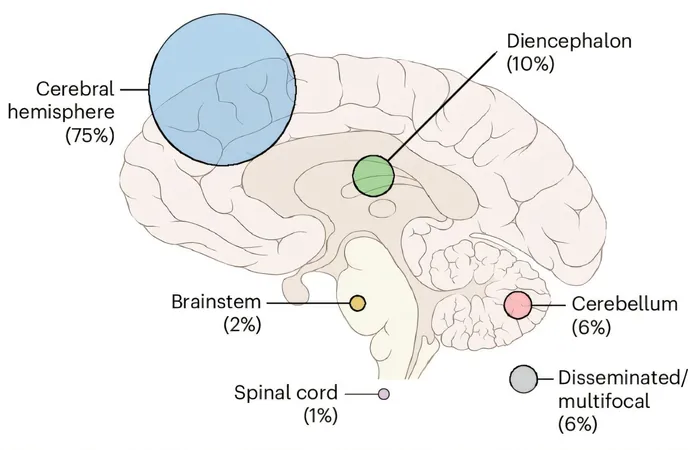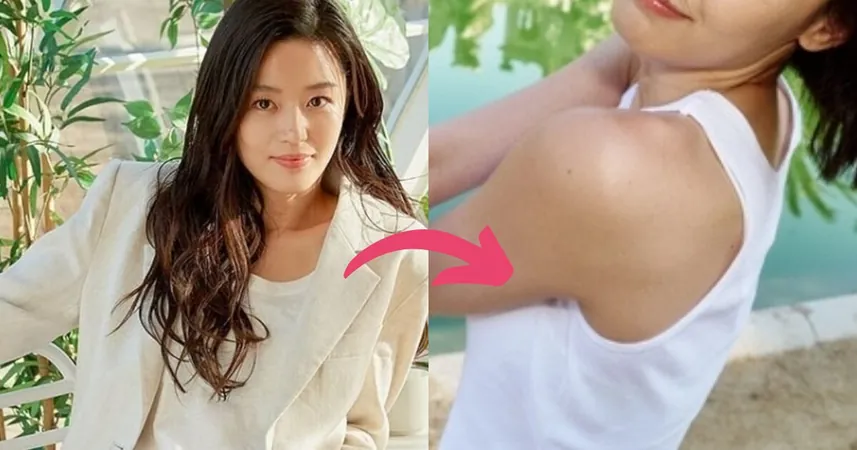
Breakthrough Molecular Testing Transforms Treatment for Young Brain Cancer Patients
2025-06-17
Author: Arjun
In a heart-wrenching journey spanning 16 years, Camryn's fight against low-grade glioma began at just two years old, when her parents noticed a lazy eye. Now, after enduring 11 brain surgeries and over six years of chemotherapy, Camryn is poised to transition from The Hospital for Sick Children (SickKids) to adult care.
Molecular Testing: The Game Changer in Cancer Treatment
Recent groundbreaking findings from advanced molecular testing have shed new light on Camryn's condition and the broader challenges of treating glioma in adolescents and young adults. A key part of a comprehensive research initiative, these insights suggest that treatment strategies should be based on the molecular characteristics of tumors rather than age alone.
Camryn's glioma was among 1,500 tumors from children, teens, and young adults examined in a significant SickKids-led study published in Nature Cancer.
Astonishing Findings from the Study
The research revealed that one-third of gliomas in individuals aged 15 to 39 exhibited genetic alterations typically seen in childhood versions of the disease. Some subtypes showed improved outcomes, while others turned more aggressive during this critical time of life.
"We discovered specific groups of glioma patients who could greatly benefit from varied treatment approaches. Armed with this knowledge, we can act sooner based on the tumor's molecular makeup," says Dr. Cynthia Hawkins, co-lead of the study.
The Importance of Early Intervention
Gliomas are the leading cause of cancer-related deaths in young adults, yet there are marked differences in the tumors that affect children versus those that arise in older populations. Treatment plans often vary significantly, depending on the patient's age at diagnosis.
Initially, Camryn's physicians chose a "watch and wait" approach to balance treatment risks with her developing brain. However, at age 15, her tumor aggressively advanced, necessitating an 18-hour surgery that—while removing a significant part of the tumor—left her paralyzed on one side.
Genetic Insights Lead to Better Outcomes
Molecular testing ultimately revealed that Camryn's glioma contained a variant in the FGFR gene. The study also discovered that low-grade gliomas in adolescents and young adults vary in location compared to children, and older patients generally fared better than younger ones, even with similar molecular origins.
Moreover, types of childhood gliomas, like Camryn's, showing changes in genes such as BRAF and FGFR, appear to become significantly more aggressive during adolescence.
Revolutionizing Care through Collaboration
"Without the right molecular tests, many adolescents and young adults might face misdiagnosis or inappropriate treatment for their glioma," warns Dr. Uri Tabori, co-lead author and Head of Neuro-Oncology. "These revelations can pave the way for innovative treatment strategies that prioritize patient quality of life."
Recognizing the need for a more cooperative treatment approach, Dr. Julie Bennett and her colleagues founded the Canadian Adolescent & Young Adult Neuro-Oncology Network (CANON). This initiative aims to enhance collaboration among healthcare providers to improve patient outcomes.
A New Dawn in Neuro-Oncology Care
After an arduous three-year rehabilitation journey, Camryn is beginning her transition to an adult neuro-oncology clinic, designed specifically for young patients with pediatric-type brain tumors, led by Bennett.
"Leaving the hospital can be incredibly stressful for families," explains Camryn's father, David. "This clinic offers comprehensive support to ensure Camryn receives the best tailored care possible."
A Call for Awareness and Research
Dr. Hawkins and her colleagues advocate for distinguishing between pediatric-type and adult-type gliomas in the WHO classification of CNS tumors. This crucial differentiation can drive better outcomes and heightened research focus.
As she prepares to enter college, Camryn aspires to become a Child Life Specialist at the hospital to assist other patients and families on their journeys. "I'm hopeful that, with ongoing research support, they will find a cure someday," she states, embodying resilience and hope.


 Brasil (PT)
Brasil (PT)
 Canada (EN)
Canada (EN)
 Chile (ES)
Chile (ES)
 Česko (CS)
Česko (CS)
 대한민국 (KO)
대한민국 (KO)
 España (ES)
España (ES)
 France (FR)
France (FR)
 Hong Kong (EN)
Hong Kong (EN)
 Italia (IT)
Italia (IT)
 日本 (JA)
日本 (JA)
 Magyarország (HU)
Magyarország (HU)
 Norge (NO)
Norge (NO)
 Polska (PL)
Polska (PL)
 Schweiz (DE)
Schweiz (DE)
 Singapore (EN)
Singapore (EN)
 Sverige (SV)
Sverige (SV)
 Suomi (FI)
Suomi (FI)
 Türkiye (TR)
Türkiye (TR)
 الإمارات العربية المتحدة (AR)
الإمارات العربية المتحدة (AR)